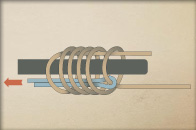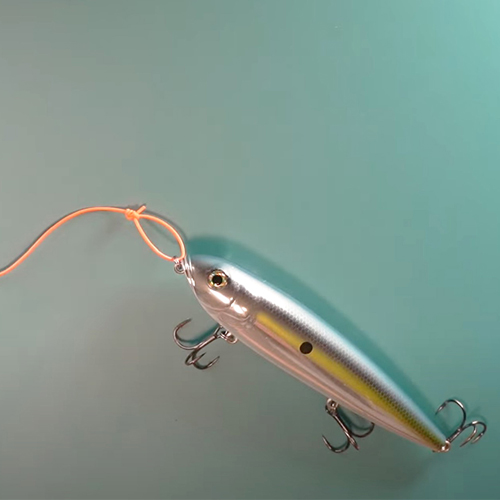Fly Fishing Knots
Tying fly fishing knots can be tricky. The hooks are usually small. In addition, fly tying knots need to be kept especially neat to be both attractive to the fish and easy to cast. Learn how to tie the most common fly fishing knots.
Popular Fly Tying Knots
Learn how to tie fly fishing knots. These fly knots are some of the most common fishing knots you can learn.
Nail Knot

Versatile enough to be used as either a backing to fly line knot or fly line to leader knot, the nail knot is one of the more useful fly line knots. Line up your fly line, your backing line (or leader line) and a small-diameter nail or needle. Wrap the backline around the fly line and nail five to eight times. Bring the tag end over and push it back between the loops, remove the nail, and tighten the knot.
Double Surgeon's Knot
Used to connect monofilament of similar or dissimilar sizes. This fly fishing knot is superior to the more popular Blood Knot in several ways. Most important, it has a stronger breaking strength and is better for joining widely divergent monofilament sizes. It's also easier to tie than a Blood Knot and usually among the first knots introduced when learning about different fishing knots.
Double Turle Knot

This popular fly tying knot was designed exclusively for tying flies with up or down-turned eyes to the shank of a hook. Plus, this smaller fly tying knot allows an excellent presentation by keeping the fly (especially nymphs) in line with your cast.
Needle Knot

Works great for tying a monofilament leader to your fly line. Use a needle to create a hole through the center of your fly line and out the side. Next pull your leader line through the hole. Then use a nail as a brace so you can wrap the leader line around the fly line.
Tube/Nail Needle Knot

Instead of running a needle through your fly line, line up the leader line, fly line and a small piece of stiff plastic tubing. Next wrap the leader line around the tube and fly line five to eight times. Then run the leader line through the tube and remove the tube.
Emergency Nail Knot

Used when you need to tie tube and/or nail fly fishing knots but don’t have a tube or nail. Take a short piece of strong, double monofilament line and fold it in half. Line up your fly line, leader line and the folded piece of monofilament. Wrap the leader line around the fly line and monofilament and pull the tag end of the leader through the looped part of the monofilament. Use the ends of the monofilament to pull the tag line through the wraps.
Duncan Loop

Use the Duncan Loop to attach your fly to your tippet. Leave the loop open to allow the fly to swing freely, or close the loop tight against the hook eye for a tight hold.
To learn more about fly fishing rods, fly fishing reels, fly fishing lines, and other fishing gear visit our Fly Fishing Gear section.
KEEP LEARNING

How to Tie the Non-Slip Loop Knot
The non-slip loop knot is a popular and reliable choice for securing hooks, lures, and other tackle to your fishing line.
LEARN MORE

Socials
Take me fishing social media links
LEARN MORE

TakeMeFishing x Teen Vogue
Join us on a creative journey as fashion designer Ahmrii Johnson walks us through her collaborative vision and process with Teen Vogue and fashion brand, Rentrayage, to create a special piece.
LEARN MORE


.png?lang=en-US&ext=.png)